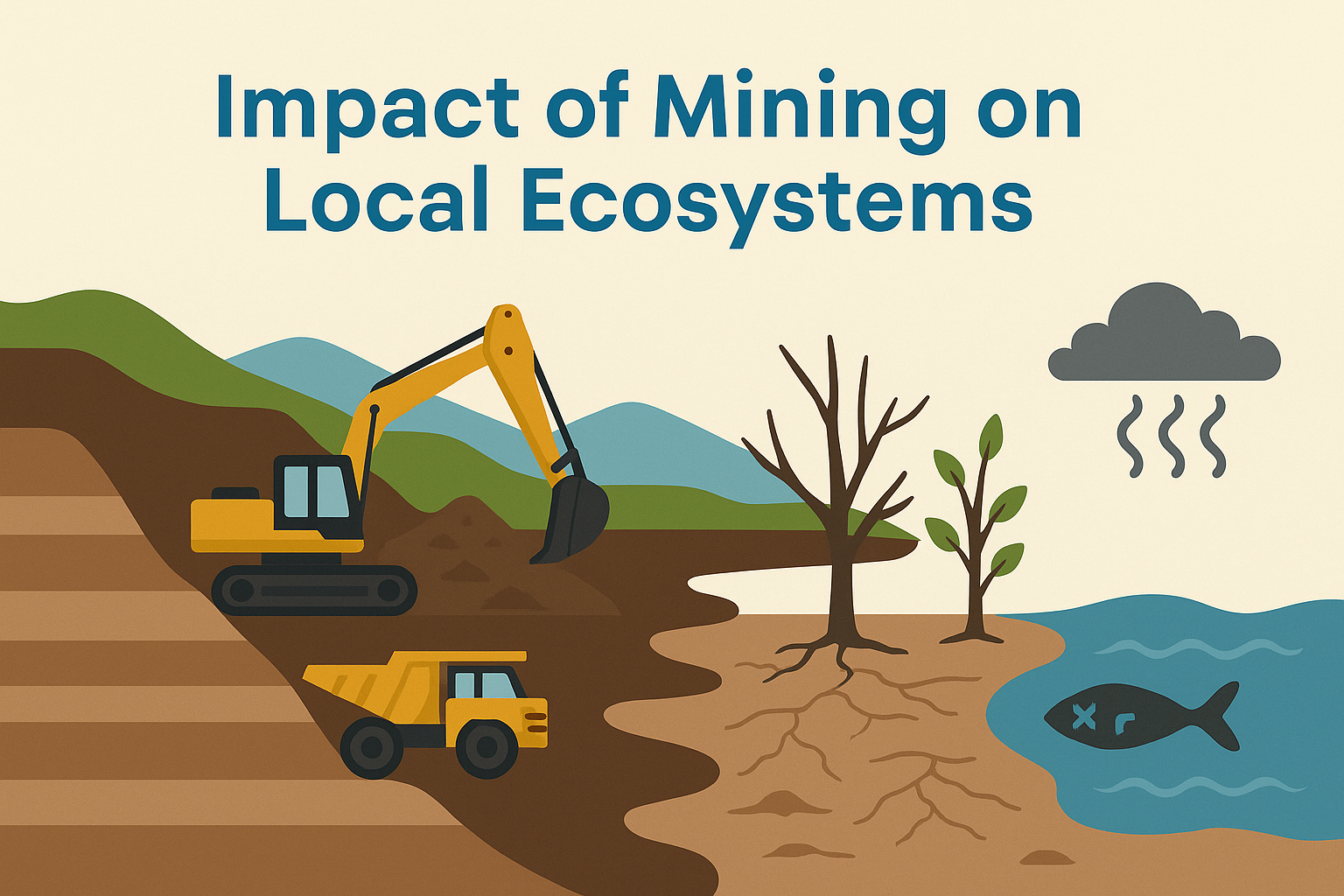Impact of Mining on Local Ecosystems
Impact of Mining on Local Ecosystems
Mining, the process of extracting minerals and resources from the Earth’s crust, plays a vital role in economic development. However, its environmental and ecological costs are often immense, especially at the local level. The impact of mining on local ecosystems is multifaceted, ranging from habitat destruction to water pollution, and from biodiversity loss to social displacement.
1. Destruction of Natural Habitats
Mining operations require large areas of land, which often leads to the clearing of forests, grasslands, and wetlands. This results in the loss of flora and fauna, some of which may be endemic or endangered.
Example: The mining of bauxite in the Eastern Ghats of India has led to the destruction of tribal forest lands and biodiversity hotspots.
2. Water Pollution and Scarcity
Mining often contaminates nearby water bodies through acid mine drainage (AMD), heavy metal leaching, and chemical runoff. The use of cyanide or mercury in gold mining poses severe risks to aquatic life and human health.
Impact: Rivers and lakes near mines can become unfit for drinking, agriculture, and fishing.
3. Loss of Biodiversity
Mining affects biodiversity both directly (by destroying habitats) and indirectly (through pollution and landscape alteration). Species sensitive to environmental changes are particularly vulnerable, leading to reduced species richness and genetic diversity.
4. Air Pollution
Blasting, drilling, and transportation release particulate matter and toxic gases such as sulfur dioxide and nitrogen oxides. This affects human health, plant growth, and animal life.
5. Soil Degradation and Erosion
Mining strips away the topsoil, making the land infertile. This causes soil erosion, desertification, and landslides, especially in fragile ecosystems.
6. Displacement of Local Communities
Mining projects often lead to the displacement of indigenous and rural communities, depriving them of their land, livelihoods, and cultural identity.
7. Conflict with Wildlife
Encroachment into forested or protected areas for mining increases human-wildlife conflict. Animals are forced into human areas in search of food and space, leading to dangerous encounters.
8. Legal and Regulatory Challenges
Weak environmental regulations or poor enforcement can worsen mining’s impact. Illegal mining, in particular, causes uncontrolled environmental degradation.
9. Impact on Microorganisms and Soil Life
Soil microbes that help with nutrient cycling and plant growth are often destroyed by mining activities, which affects soil health and broader ecosystem functions.
10. Rehabilitation and Sustainable Alternatives
Eco-friendly mining practices, such as reclamation, afforestation, and use of green technologies, can reduce environmental harm. Post-mining land restoration is essential to recover ecological balance.
Conclusion
While mining is essential for economic progress, its unchecked growth can cause irreversible damage to local ecosystems. A balance must be maintained through sustainable practices, strict regulations, and community participation to ensure environmental conservation for future generations.
